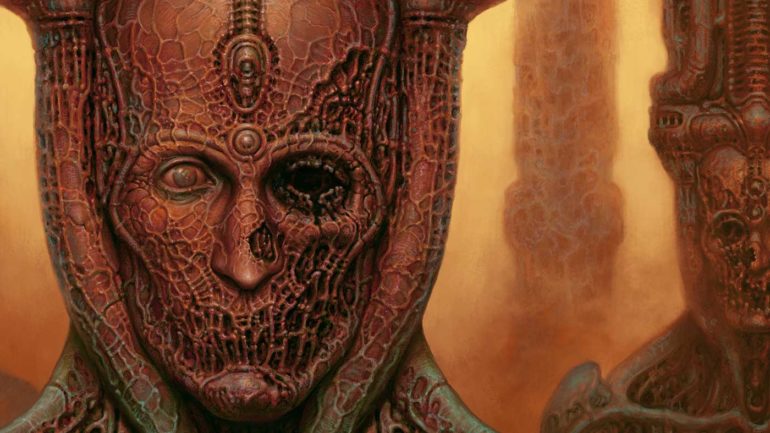Scorn is here. I still can’t explain it adequately. But it’s a game, which is to be expected, and it’s an experience like no other. First revealed in 2014, the game has seen numerous delays and lived through two Kickstarter campaigns. Following a re-reveal in 2020, Scorn is finally here, and it’s exclusively for the newer generation of consoles and PC. I often remark that games that take this long to make are rarely good, but Scorn bucks that trend, though it’s not without a few caveats.
It’s hard to even talk about what Scorn is about from a narrative standpoint without either ruining things or sounding too vague to be comprehended. You are a nameless character, a skinless being who has awoken from a deep sleep on an alien planet. With no dialogue or even a hint to tell you why you’re doing what you’re doing, your character wanders the planet to presumably escape or make sense of their existence.

When I say that Scorn’s narrative structure is minimalist, I really mean it. There is not a single line of dialogue in the entire game; the only aspect of the game to guide your understanding is completely non-verbal. No audio logs or documents are left behind to give context to the bizarre and macabre sights you’re seeing. It’s you, dropped into an alien world to explore, left to infer whatever you want from your observations.
I am torn as to whether I like this approach. On the one hand, it allows you to completely immerse yourself in Scorn’s unique sense of atmosphere and place. Still, on the other hand, it does feel a little bit cheap from a writing perspective. As the credits rolled, I couldn’t help but think that things were intentionally vague because there wasn’t anything, to begin with. Perhaps I’m wrong, but it’s certainly a game that will fuel discussions and theorising long after players are done with it. The focus has clearly been on creating the environment first. The developers have, after all, stated that they want the world of Scorn to act as a character itself, and they’ve absolutely nailed it in that regard.
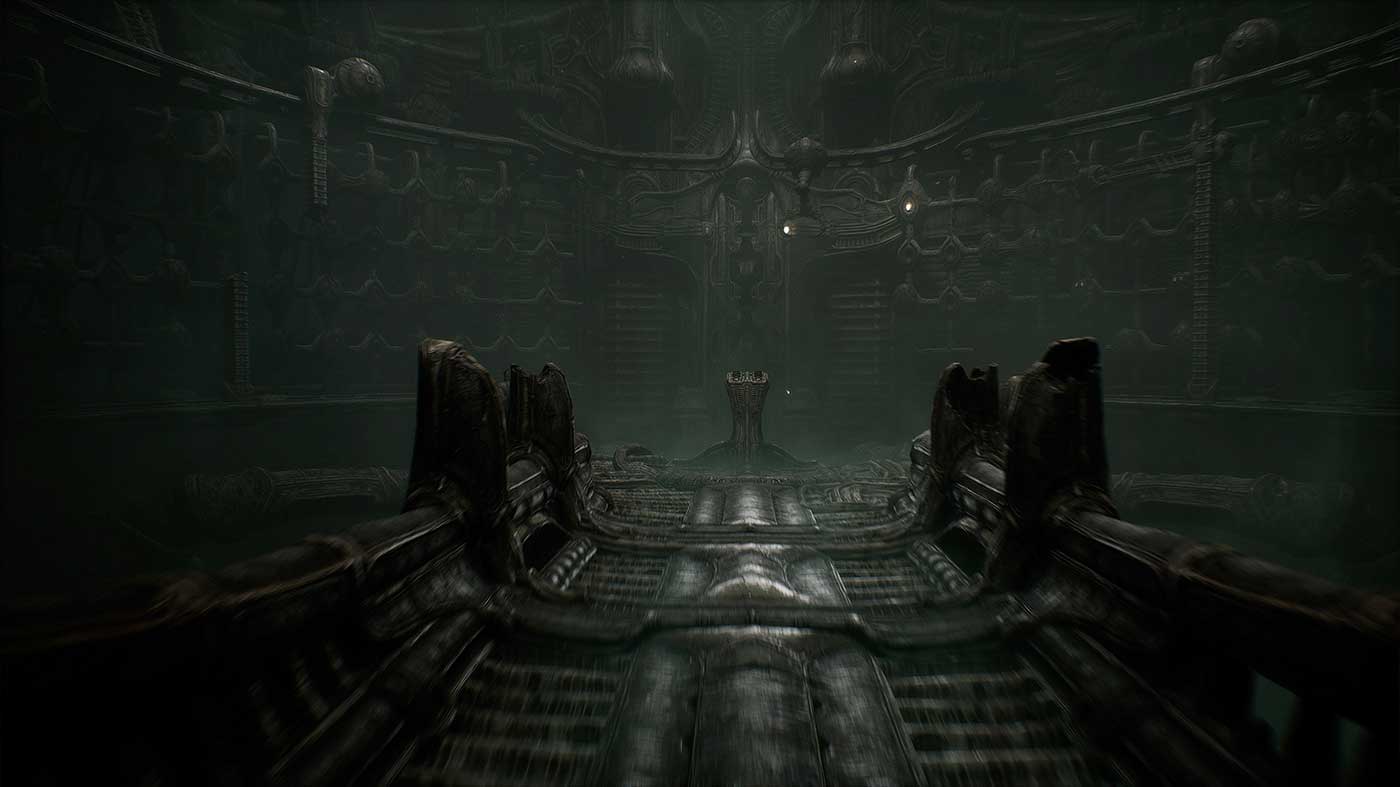
Scorn, as a game, is best described as a first-person adventure with some horror elements. Like I’d surmised in my preview, there are no jumpscares. Instead, Scorn effectively weaponises an intense and ominous atmosphere to instil a sense of dread in the player. When I played Scorn, I wasn’t scared of the creatures or what was around the corner. I was scared of the situation – to be so isolated and alone in this strange world – and just what it all meant. It reminds me a lot of a game like Soma, in that regard, another game that posed more disturbing or uncomfortable questions than answers. However, Soma did so in a much more overt way. Scorn doesn’t care if you solve its mystery or not, only that you follow it on its weird journey. And it’s hard to resist.
But what a journey it is. Throughout the story, you’ll explore, solve some puzzles, and encounter strange enemies along the way. The crux of the experience is exploring and interacting with the world to create a path so that you can head deeper into it. The puzzles themselves are fairly typical of what you’d expect to find in most games. Think sliding puzzles and complete-the-circuit type affairs that you’ve no doubt come across elsewhere, but with a wet coat of fleshy paint applied to fit better with the aesthetic Scorn is gunning for.
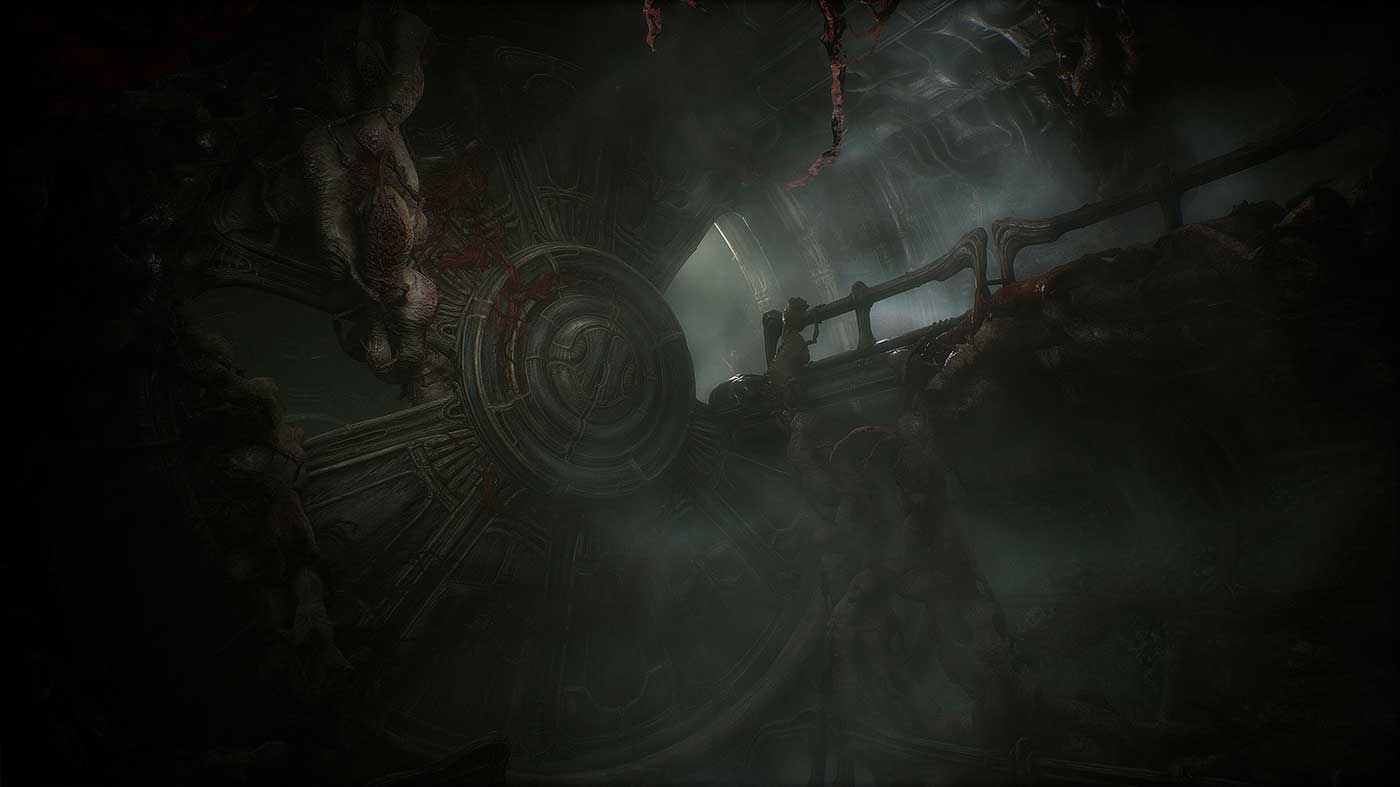
Scorn is a simple but beautiful experience when exploring and solving puzzles. It’s moments like these where things come together, and the team’s dedication to building such a thick atmosphere pays off. It’s not anywhere near as challenging or puzzling as the game thinks, mind you, but the puzzles are great ways to immerse you into the world. About halfway through the game, though, you’ll be given weapons and enemies to either avoid or fight, and this is where Scorn falters a little.
The combat mechanics make me think that Scorn is unsure of what it wants to be. It’s clearly not a shooter – the ammunition given to you in such small amounts indicates as much – but it’s also not a passive enough experience that you can ignore enemies entirely. Combat, on the whole, feels slow and cumbersome. You can try to evade enemies at any given point, but the environments are so claustrophobic, and your movement is so slow and unruly that a successful evade seldom happens.
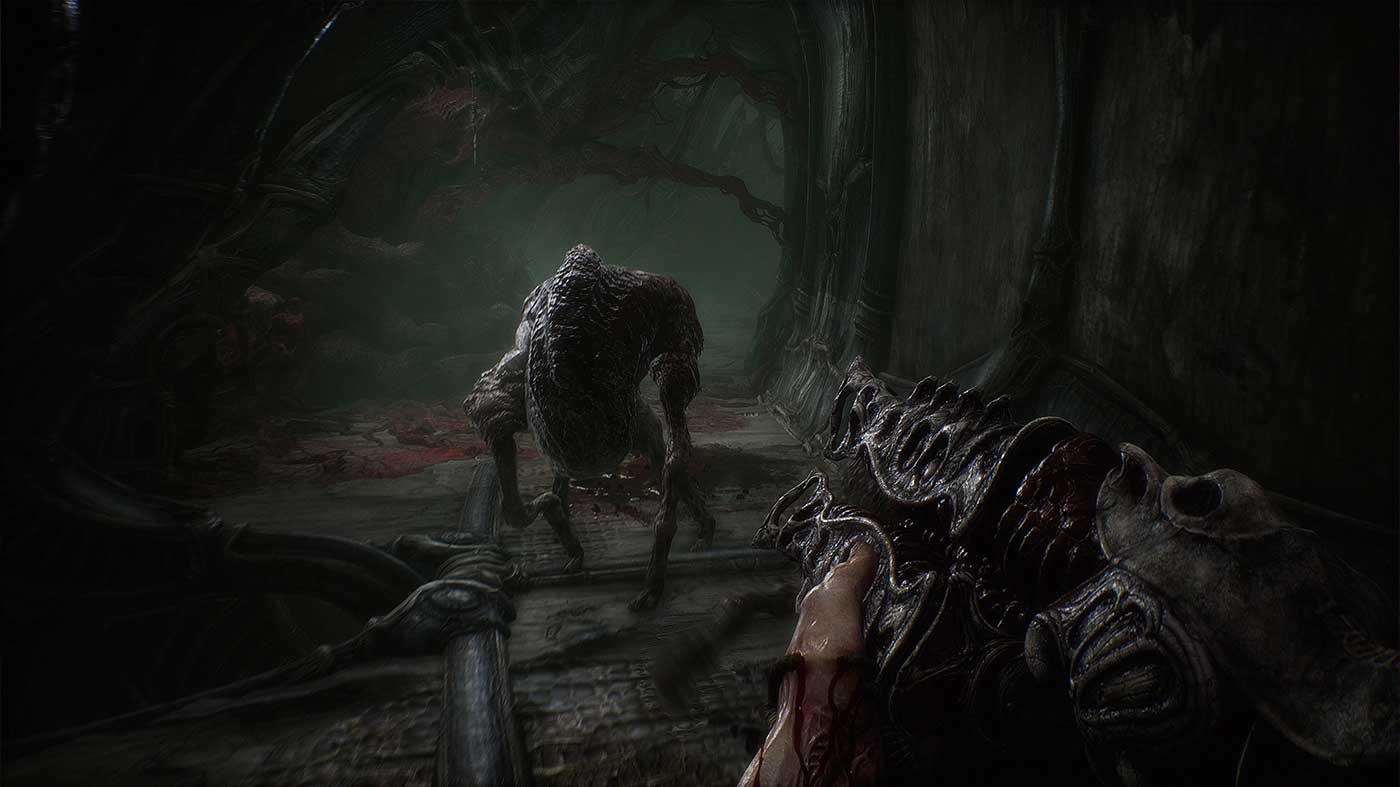
Add to this a health system that’s non-regenerating and a finite supply of health recovery items, and Scorn can get frustrating quickly. Don’t get me wrong, I’m somebody who grew up on games like Resident Evil and Alone In The Dark, which were exercises in both endurance and frustration. But Scorn’s combat feels like such an afterthought that I have to wonder why it was even included. Every other aspect of the game is so strong that the combat only serves to bring the whole experience down, barring one memorable encounter towards the end of the game.
Lenient checkpoints do an excellent job of alleviating some of this frustration, but that won’t stop you from losing your way. I voiced similar concerns in my preview that the minimalist style of the game would translate to some unintuitive puzzle solutions or would lead to players to miss a step and feeling “lost” when progress would halt.
In the final game, this only happened to me once, but it was very frustrating when it did. Not even because I was stuck on a puzzle, but because I had to wander an area filled with enemies with pinpoint accuracy projectiles flying at me and finite ammo and health. Making the environments slightly wider to give more of a chance to evade or even just making the player more agile could solve most of these problems and remove a lot of the frustration from the experience.
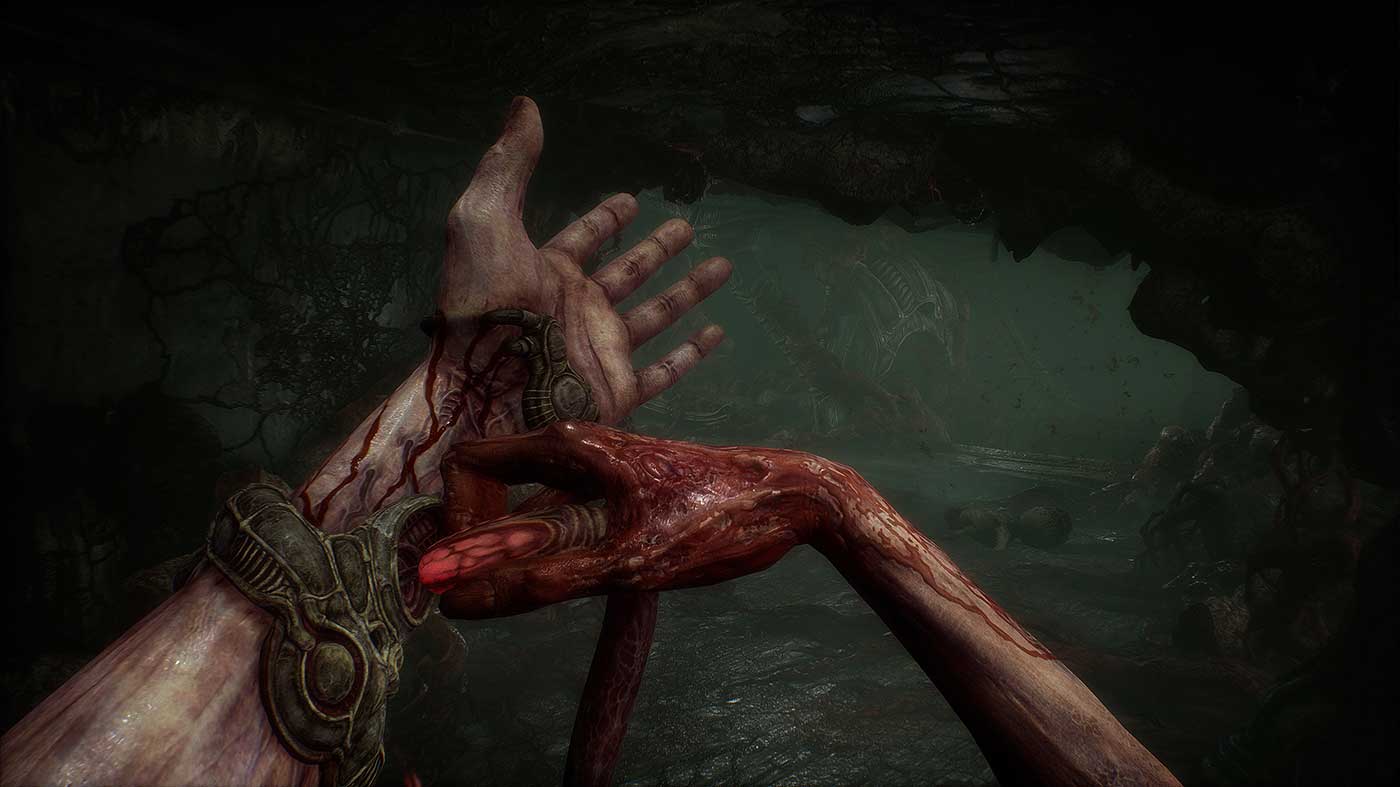
That being said, Scorn is still engaging and compelling from beginning to end. Putting aside the aforementioned enemy-focused areas in the middle, the entirety of the game’s six-to-eight-hour storyline never overstays its welcome. And each of these areas is just as distinct from the last. It’s been weeks since I finished it, and every pivotal moment is still fresh in my mind. Completing the game more or less means you’re done with it – while Scorn does feature some differing paths in some of the acts, they all ultimately lead to the same destination.
But while it’s linear, the world of Scorn is so masterfully presented that it doesn’t really matter. Honestly, the game’s forte, the way that Scorn builds its world with so little exposition or overt explanation, is truly masterful. As I mentioned in my preview, so much atmosphere and charm is built from the ground up without grating music or loud stingers highlighting what you’re meant to be scared of. And while the early (publicly shown) areas are what you’d expect from the likes of a game inspired by artists like H.R. Giger and Beksinski, the game does a great job of coming into its own during its final moments.
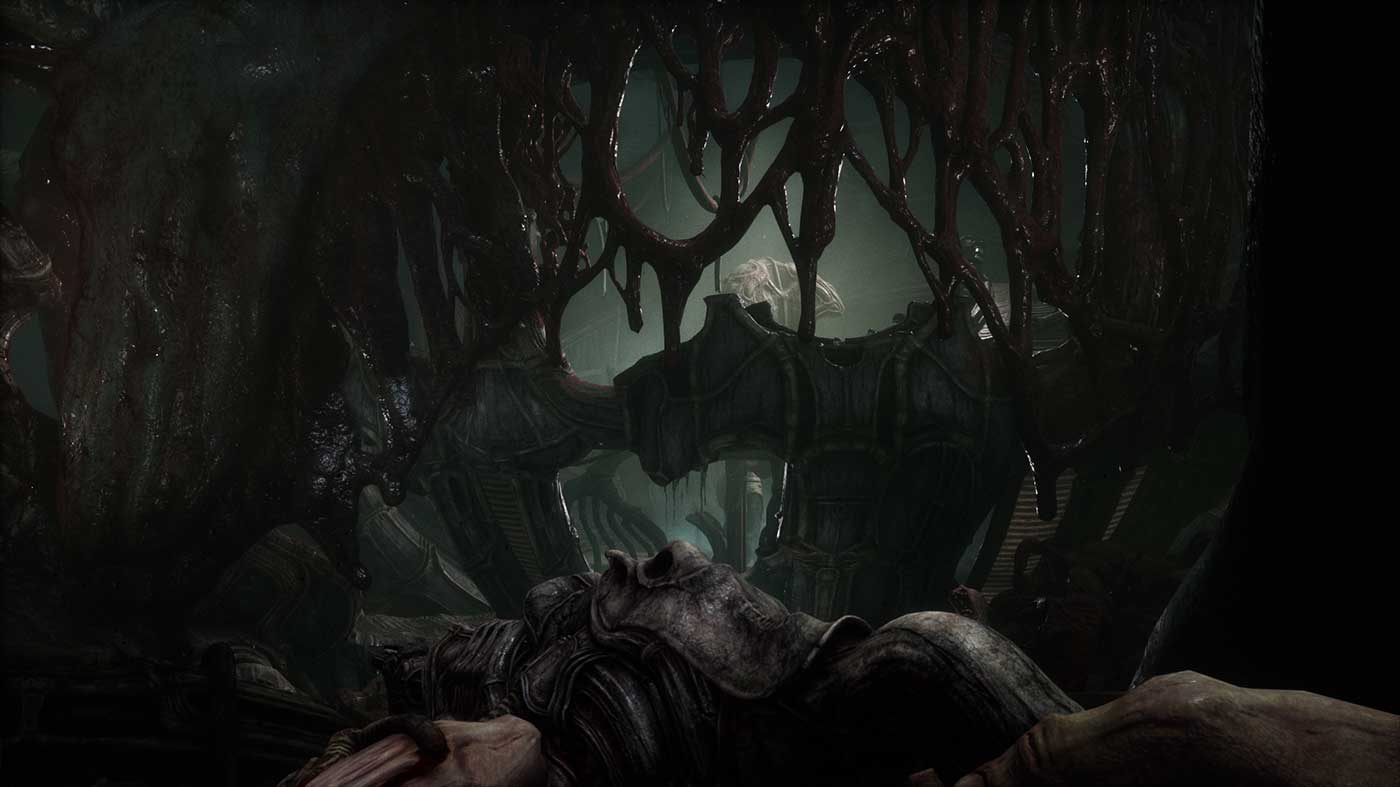
I can’t emphasise just how well-built the world of Scorn is. Barely anything happens in it, and yet it’s one of the scariest realms I’ve ever had to step into. If you can, you owe it to yourself to play this late at night with a good set of headphones or sound system. The ambient noises – like wind are so perfectly tuned that you’ll eventually start hearing things yourself that aren’t there. Mist, smoke, distant noises. Wet footsteps. It all comes together in a beautifully macabre way to create one of the most uniquely compelling worlds I’ve ever explored in a game.
THE PC VERSION WAS PLAYED FOR THE PURPOSE OF THIS REVIEW. A DIGITAL COPY OF THE GAME WAS PROVIDED BY THE PUBLISHER.


